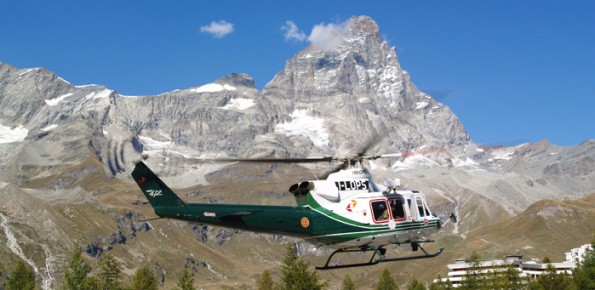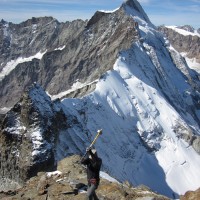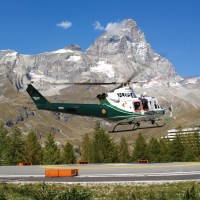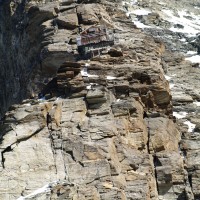Micro-seismic network at the Carrel Hut on the Matterhorn
Deployment and maintenance of a micro-seismic network on the rocky slopes surrounding the Carrel Hut on the Matterhorn and delivery of a service of gathering, storing and analysis of the recorded signals

Background
The permafrost degradation is a probable cause of the increase of rock instabilities and rock falls observed in recent years in high mountain areas. It causes the thaw of the ice filling rock discontinuities producing water that subsequently freezes again, inducing stresses that lead to rock falls. Rock-falls are among the most hazardous instability processes in high mountain environments because of their velocity and the difficulty to recognize precursory signals.
Purpose
The project is finalized to gather and analyze the signals produced by microseismic activity (MS) due to induced stress in rocks. The purpose of the research is to locate the MS sources, to characterize them, to study the relationships with the temperature changes and to graphically represent them. The final goal is to study the possible links of rock slopes deformations with the permafrost degradation.
Methods
Geophones allow the recording of ground vibrations that precede rock-falls and are due to the initiation and coalescence of existing cracks induced by stress. A detecting system composed by geophones and thermometers was installed at the J.A. Carrel hut (3829 m a.s.l., Matterhorn, NW Alps) in 2010 to detect such vibrations.
Results
The analysis of the recorded events showed that most part of microseismic activity sources were superficial. The comparison of these data with temperature records has evidenced a temporal concentration of the seismic activity when the temperatures rapidly fall ,but minor concentrations of MS events occur in summer months when air and rock temperatures temporarily rise above 0 °C. These discoveries might be exploited for warning purposes.
Products
Installation of a detecting system composed by geophones and thermometers at the Carrel hut (3829 m a.s.l., Matterhorn, NW Alps) to monitor and investigate the possible degradation of permafrost that may lead to rock-falls. Collection of some thousands of microseismic events, definition of methods for the microseismic sources location and identification of their link with temperature changes.
Conclusions
The recording and interpretation of further events and temperatures is needed to better understand the relation between climate change, microseismic data and rock slope instability. To this aim, a more precise location of the acoustic emission sources to gather indications on the eventual presence of weakness zones in the investigated area, would require a more accurate knowledge of the propagation velocity model.





